
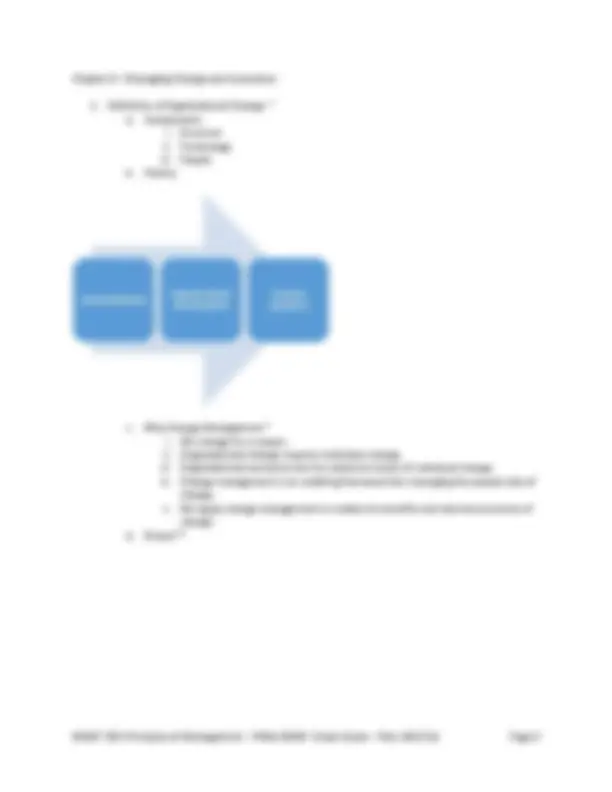
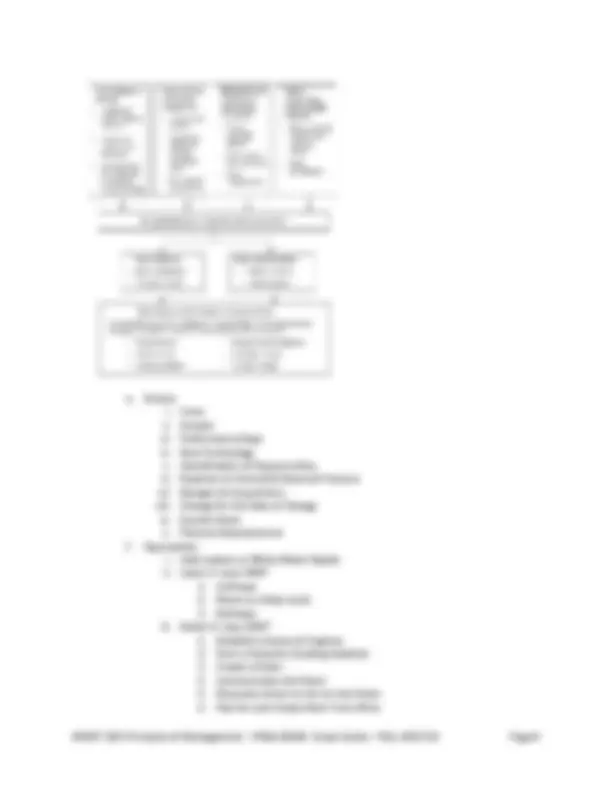
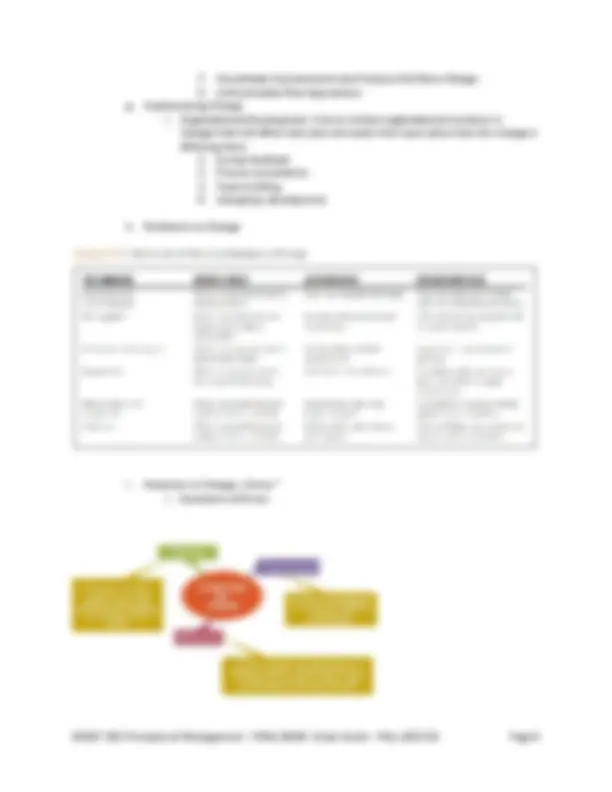
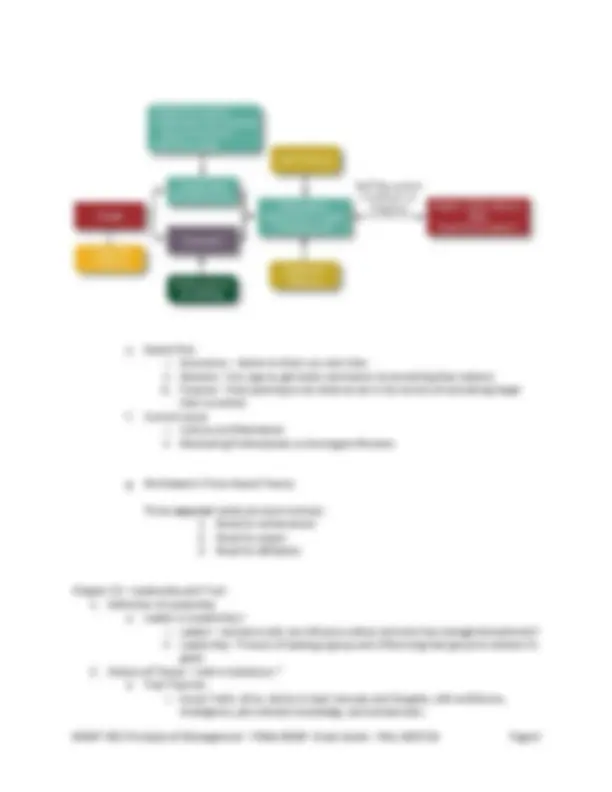
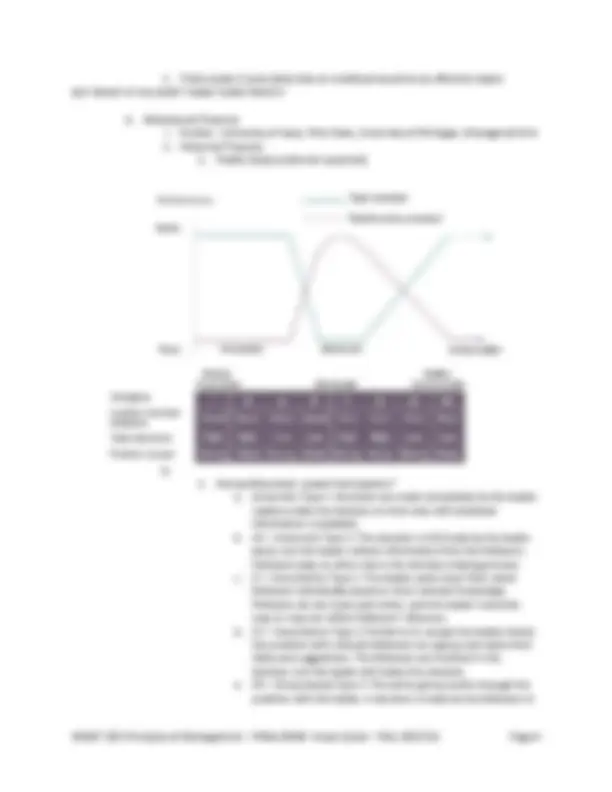
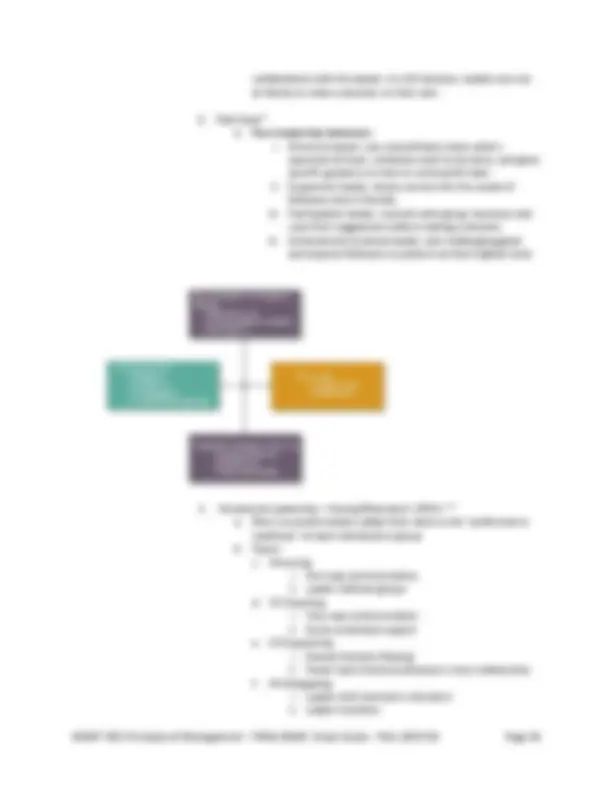
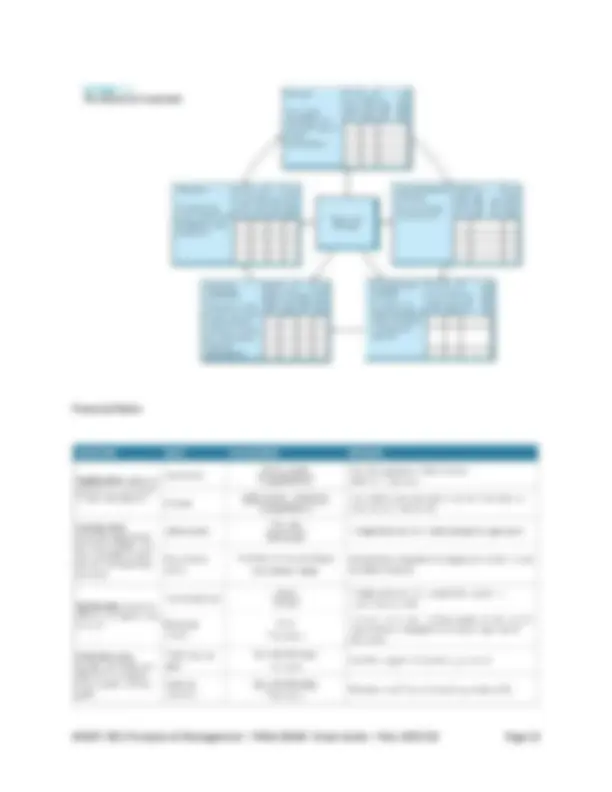
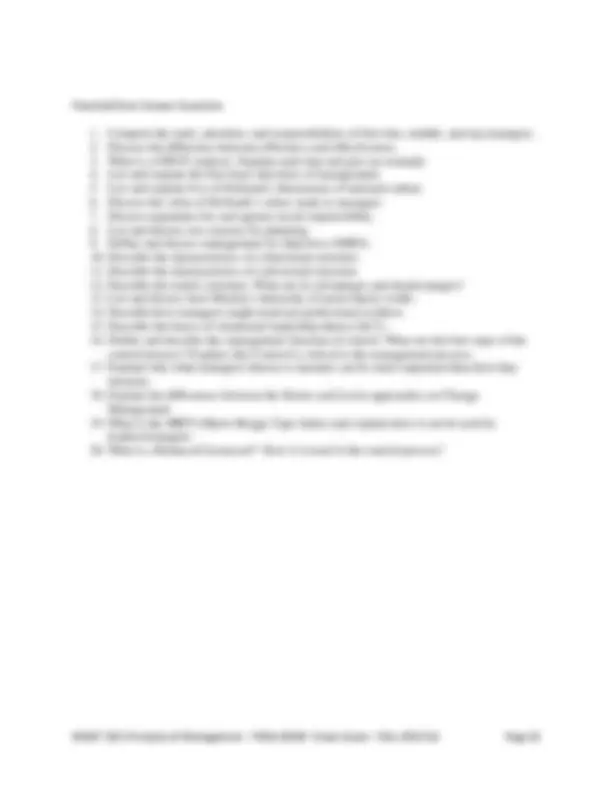


Study with the several resources on Docsity

Earn points by helping other students or get them with a premium plan


Prepare for your exams
Study with the several resources on Docsity

Earn points to download
Earn points by helping other students or get them with a premium plan
Community
Ask the community for help and clear up your study doubts
Discover the best universities in your country according to Docsity users
Free resources
Download our free guides on studying techniques, anxiety management strategies, and thesis advice from Docsity tutors
MGMT 201 Principles of Management – FINAL EXAM Study Guide – FALL 2017/18. Page 1. MGMT 201 FINAL Exam Study Guide. The FINAL Examination will constitute ...
Typology: Study notes
1 / 14

This page cannot be seen from the preview
Don't miss anything!









The FINAL Examination will constitute 35% of your term grade. The exam will have 100 points.
The exam will focus on material presented in class from Chapters 7, 8, 11, 12, & 14 in the Fundamentals of Management textbook
There will be 25 Multiple Choice Questions. Each question will be worth two points for a total of 50 points. Additionally, there will be 5 Short Answer Questions, each worth 10 points for a total of 50
points. For the short answer questions, you will be given seven (7) questions, and you will choose five of those questions to answer.
Multiple choice questions will cover the topics studied after the midterm (and including chapter 7). Short Answer Questions will cover important topics for the entire term. This guide will include a bank of potential questions for your preparation.
Questions will be sourced from the textbook and lecture notes. Pay particular attention to topics highlighted with an asterixis (*).
There were also be an Extra Credit Short Answer Question worth ten (10) additional points.
Chapter 7 – Managing Human Resources
e. Drivers i. Crisis ii. Growth iii. Performance Gaps iv. New Technology v. Identification of Opportunities vi. Reaction to Internal & External Pressure vii. Mergers & Acquisitions viii. Change for the Sake of Change ix. Sounds Good x. Planned Abandonment f. Approaches i. Calm waters vs White Water Rapids ii. Lewin 3- step 1948*
h. Resistance to Change
i. Reactions to Change = Stress * i. Symptoms of Stress
c. Herzberg Two Factor i. Satisfaction vs dissatisfaction ii. Found removing things that dissatisfy does not necessarily increase satisfaction and vice versa
d. Goal Setting Theory * i. Working towards a goal is major source of job motivation ii. Depends on the specificity of the goal
e. Daniel Pink i. Autonomy – desire to direct our own lives ii. Mastery – the urge to get better and better at something that matters iii. Purpose – they yearning to do what we do in the service of something larger than ourselves f. Current Issues i. Culture and Motivation ii. Motivating Professionals vs Contingent Workers
g. McClelland’s Three Needs Theory
Three acquired needs are work motives:
Chapter 12 – Leadership and Trust
collaboration with the leader. In a GII decision, leaders are not at liberty to make a decision on their own.
Chapter 14 – Foundations of Control
Financial Ratios
Potential Short Answer Questions